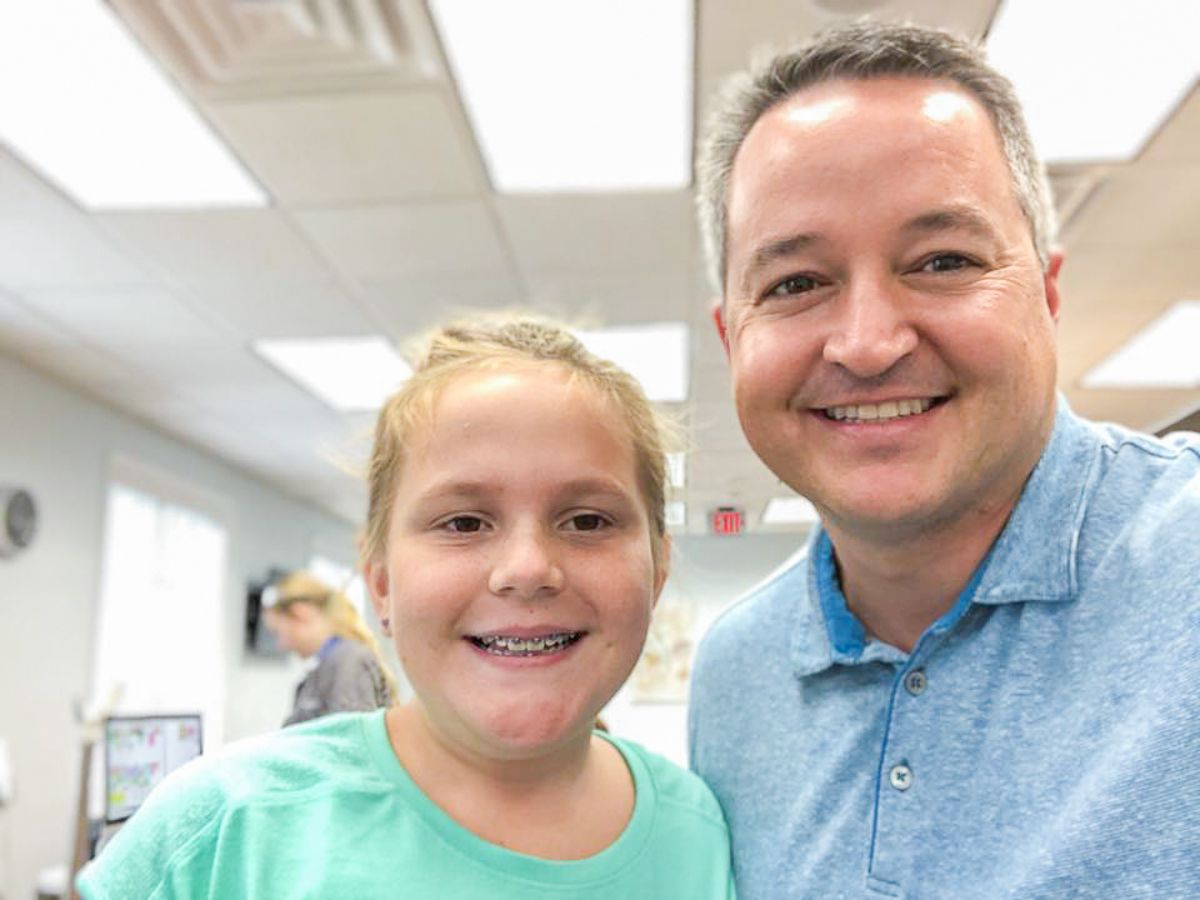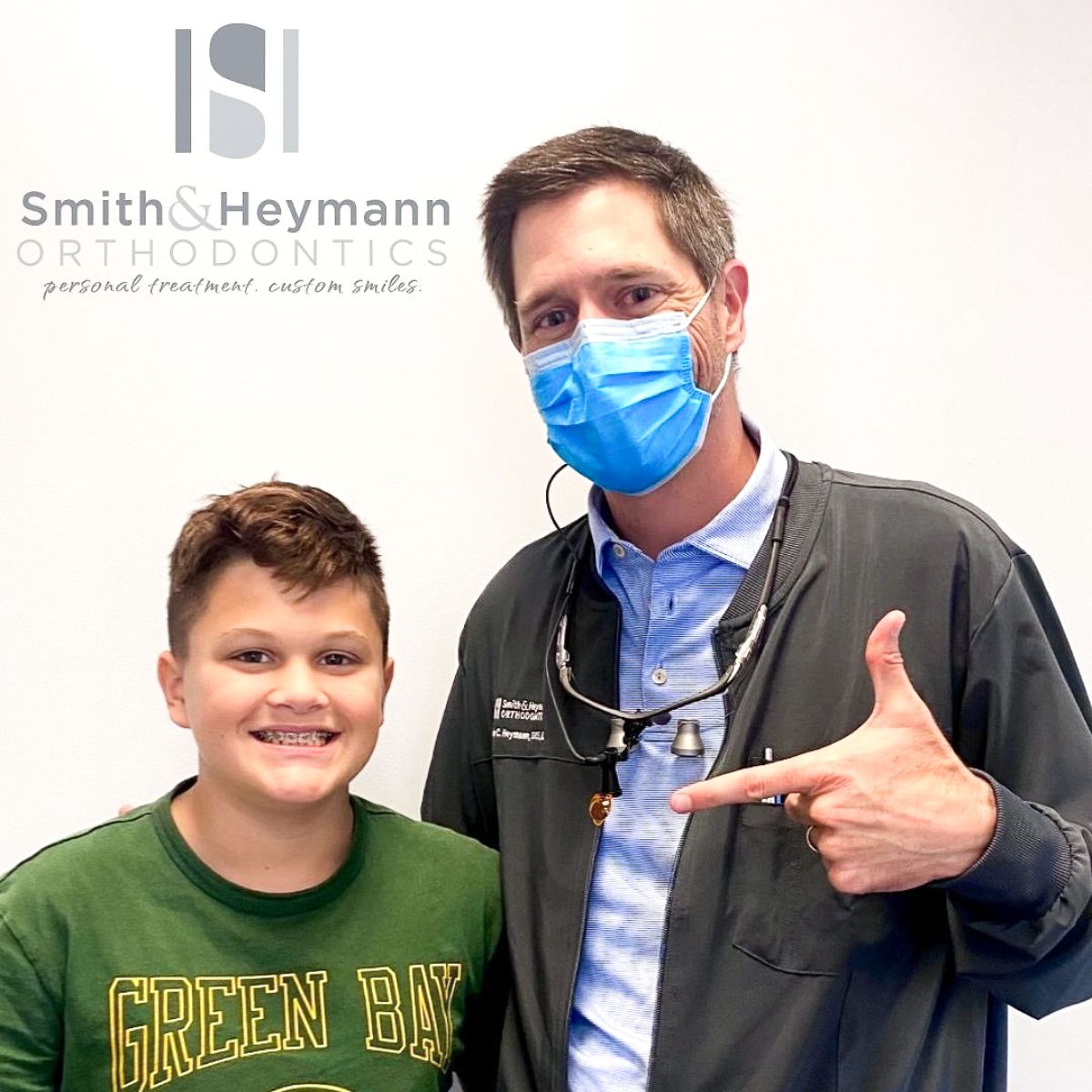As a parent, you likely have a keen eye for every sign that your child is uncomfortable or hurting. That means you may have noticed some of the signs of jaw pain, which is surprisingly common in children. If your child has been rubbing their jaw or complaining of discomfort when they eat or yawn, there could be a problem that needs attention. While there are several possible causes of jaw pain in children, it’s often due to a misaligned bite. This is also known as a malocclusion, and the good news is, it can be corrected! Keep reading to learn how we can identify and treat a child’s misaligned jaw.
Here at Smith & Heymann Orthodontics, we see many young patients who are struggling with a misaligned bite causing jaw pain and other issues. Early orthodontic evaluations are recommended by the American Association of Orthodontists for every child by the time they’re about 7 years old to help catch any potential problems, including malocclusions. By this age, most children will have enough dental “landmarks” in place that an orthodontist can ensure their teeth, jaw, and bite are developing as they should be.
Whether your child has been exhibiting symptoms of a misaligned jaw or it’s simply time for their first orthodontic visit, Dr. Smith and Dr. Heymann will be looking for several common conditions as they examine their mouth. It can be helpful for parents to understand what these issues are and how we can correct them, so keep reading below for more information on misalignments!
Crowded teeth
Good dental hygiene is essential for maintaining oral health, but crowded teeth can interfere with this. Children with crooked teeth are sometimes more likely to develop tooth decay, cavities, and other dental problems since they can be more difficult to keep clean.
Gapped teeth
Gaps in teeth are very common in childhood and can exist for a variety of reasons. These include genetics, thumb or finger sucking, and extended use of a bottle or pacifier. If your child has a bit too much space between their teeth, their orthodontist will be able to identify any underlying causes and address them.
Missing teeth
Some children have a noticeable gap in their smiles because of congenitally missing teeth that never grew in or permanent teeth that have been lost due to injury or disease. If this is something your child is dealing with, we can use an orthodontic appliance like braces to move the existing teeth into the proper positions. Your family dentist can then place a bonded bridge or implant to fill the gap formed from the missing tooth.
Open bite
With an open bite, the upper and lower rows of the front teeth don’t touch or close when smiling or chewing. Many open bite cases come from extended thumb sucking in childhood, which can cause the teeth to grow into a noticeably rounded formation.

Deep overbite
When a child has a deep overbite, the lower teeth recede so far behind the upper teeth that they bite into the roof of the mouth. The upper front teeth also overlap the lower front teeth. Out of all the bite disorders, a deep overbite is the most harmful to the teeth and health of the jaw joints. It can also have an impact on the shape and appearance of a patient’s face.
Underbite
An underbite occurs when the bottom teeth protrude in front of the upper teeth. This type of bite misalignment can cause pain at the jaw joint and the angled pressure can wear down some of the front teeth, which can be uncomfortable or painful.
Overjet
Overjets, also known as “buck teeth”, occur when the top front teeth protrude far beyond the bottom front teeth. We can most effectively treat this condition when diagnosed early, as this allows us to use the child’s growth to our advantage and guide the eruption of the teeth.
Treating a child’s misaligned jaw
Every child’s bite is different, so there’s no one-size-fits-all approach to orthodontic treatment. Dr. Smith or Dr. Heymann will create a customized treatment plan for your child that is based on their unique needs and goals. This may include a combination of orthodontic appliances, which will be explained in detail when treatment options are discussed. The most commonly used appliances are braces and clear aligners. Let’s take a look at the ones we offer!
Metal braces
Metal braces are one of the most recognizable symbols of orthodontics, and also the most common type of treatment. The brackets are made of a mix of stainless steel, nickel, and other high-quality metals, making them very durable and long-lasting.
Modern metal braces are also much more comfortable and lighter than they used to be. They’re customizable, too, thanks to a variety of fun colored bands to choose from! These braces deliver excellent results and can be especially useful in cases that are more severe or complicated.
Since they don’t require some of the more complex technology or expensive equipment that newer treatments do, metal braces with Smith & Heymann Orthodontics also tend to be a slightly more affordable option. The overall strength, durability, and cost-effectiveness of traditional braces keep them the top treatment for orthodontics, year after year.
Clear braces
Also known as ceramic braces, clear braces work in the same way as metal braces but have the additional benefit of semi-translucent ceramic brackets. While clear braces are about the same size and shape as metal braces, they’re able to better blend in with a patient’s natural smile for a more subtle straightening option. This is especially true when they’re paired with clear, white, or tooth-colored wires and elastic ties!
While ceramic braces are tough, the material they are made from can be prone to chipping or cracking. Since metal braces can tolerate more pressure than ceramic ones, they may be a better option for younger patients and those who require more severe corrections.
Ceramic brackets are often slightly more expensive than metal brackets, as well. Since they can be more expensive and are more prone to breakage, we believe ceramic braces are generally better suited to adults and older teens.
Invisalign clear aligner therapy
Instead of brackets and wires, the Invisalign system uses a series of clear removable aligners to move teeth into the desired positions over time. This is accomplished by wearing them 20-22 hours per day throughout the treatment process, and replacing them every 1-2 weeks for the next aligner in the system as directed by your orthodontist.
Invisalign offers our North Carolina patients a bit more freedom and flexibility than other treatment options do. There are no food restrictions since aligners are removed when eating or drinking. Aligners are also designed to be taken out before brushing and flossing, so it can be easier to maintain oral health. We offer both Invisalign and Invisalign Teen in our office.

Give your child the smile they deserve with Smith & Heymann Orthodontics
Correcting a misaligned bite can prevent and eliminate jaw pain, but that’s only the beginning! Other benefits may include:
- reduced risk of tooth decay and cavities
- improved speech
- reduced risk of chipped or lost teeth
- improved function
- increased self-confidence
- an easier time eating, sleeping, and even breathing!
Orthodontic treatment is an investment of your time and finances, but your child will reap the rewards for many years to come. Here at Smith & Heymann Orthodontics, our goal is to make a positive impact on your child’s life by enhancing their self-esteem and improving their overall oral health. Correcting a misaligned bite allows us to do both!
If you’re in Chapel Hill, Durham, Mebane, Roxboro, or the surrounding areas and want to learn more about how we can identify and treat jaw pain in children, get in touch with us today! We’d love to schedule a FREE consultation for your child and put them on the path towards a healthy, happy smile.

